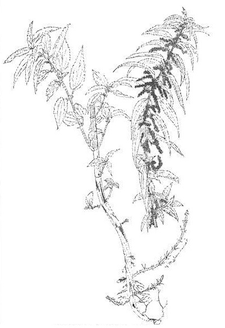Spring comes to the coast of California in early February, like an over-eager dinner guest arriving an hour and a half before the appointed feast. We have barely recovered from bringing in the November harvest of Baldwin apples and winter potatoes when spring touches the bleak, windswept land. With a mixture of dread and awe, I watch as the white petals of our old plum tree push against their bud casings and burst open, announcing the new season.
Underneath the plum is a thicket of spring weeds: black mustard and miner’s lettuce, chickweed and shepherd’s purse, and deep veins of stinging nettle. These weeds run in seams across the cultivated cropland of Green Gulch Farm. Every year in this season I walk the fields, waist-high in weeds. I feel the pulse of the land stirring awake underneath my feet.
In the first years of San Francisco Zen Center, Suzuki Roshi encouraged new students by saying:
Even though you have some difficulty in your practice, what is difficult will also help you. Be grateful for the weeds you have in your mind because eventually they will enrich your practice.
And this is true. I have been enriched by the weeds that I cut down every spring. It is not easy to weed out virile plants, but make no mistake: I am a ruthless gardener in my core. When I see a Buddha, I weed out that Buddha with my demon hoe.
I am not sentimental about weeds, and I am not romantic. There is no such thing as a noble “native weed.” Weeds are immigrants, like most of us. And weeds are the product of civilization. Chief Hiawatha named plantain “white man’s footsteps” when he found this weed growing in the disturbed soil of early colonial fields.

But spring weeds are very determined; they command full respect. Weeds often grow on land no other plant can tolerate, and by their presence they indicate and transform the nature of that land. When you find stands of sourgrass and sheep sorrel, or skunkweed and yellow dock, you can bet their soil is water-logged, acidic, and seized tight. The only remedy for seized soil is deep cultivation. Ironically, the taprooting weed, yellow dock, is one of the best cultivators. Dock both thrives in bogland conditions and also changes the bog by breaking up its airless soil.
Take some time this spring to study the weeds of your garden. Study them, and then turn them under. Don’t be a softy! I know spring weeding is not for the faint of heart. I remember this every spring as I slash into the dark green stands of my favorite weed, stinging nettle. The Tibetan saint Milarepa lived entirely on nettles until he became “as green as the nettle itself.” Nettles are one of the highest sources of B vitamins in the plant kingdom. Juice from the hollowed barb of the nettle sting has been found to relieve the numbness of rheumatism and arthritis. And when returned to the soil, nettles deposit record accumulations of phosphorous, nitrogen, calcium, and potassium.
Surrounded by nettles, my weeding hoe chops Milarepa’s plant into the black March soil. Unprotected, but grateful for the weeds I have in my mind, I feel the sting of spring.
Thank you for subscribing to Tricycle! As a nonprofit, we depend on readers like you to keep Buddhist teachings and practices widely available.